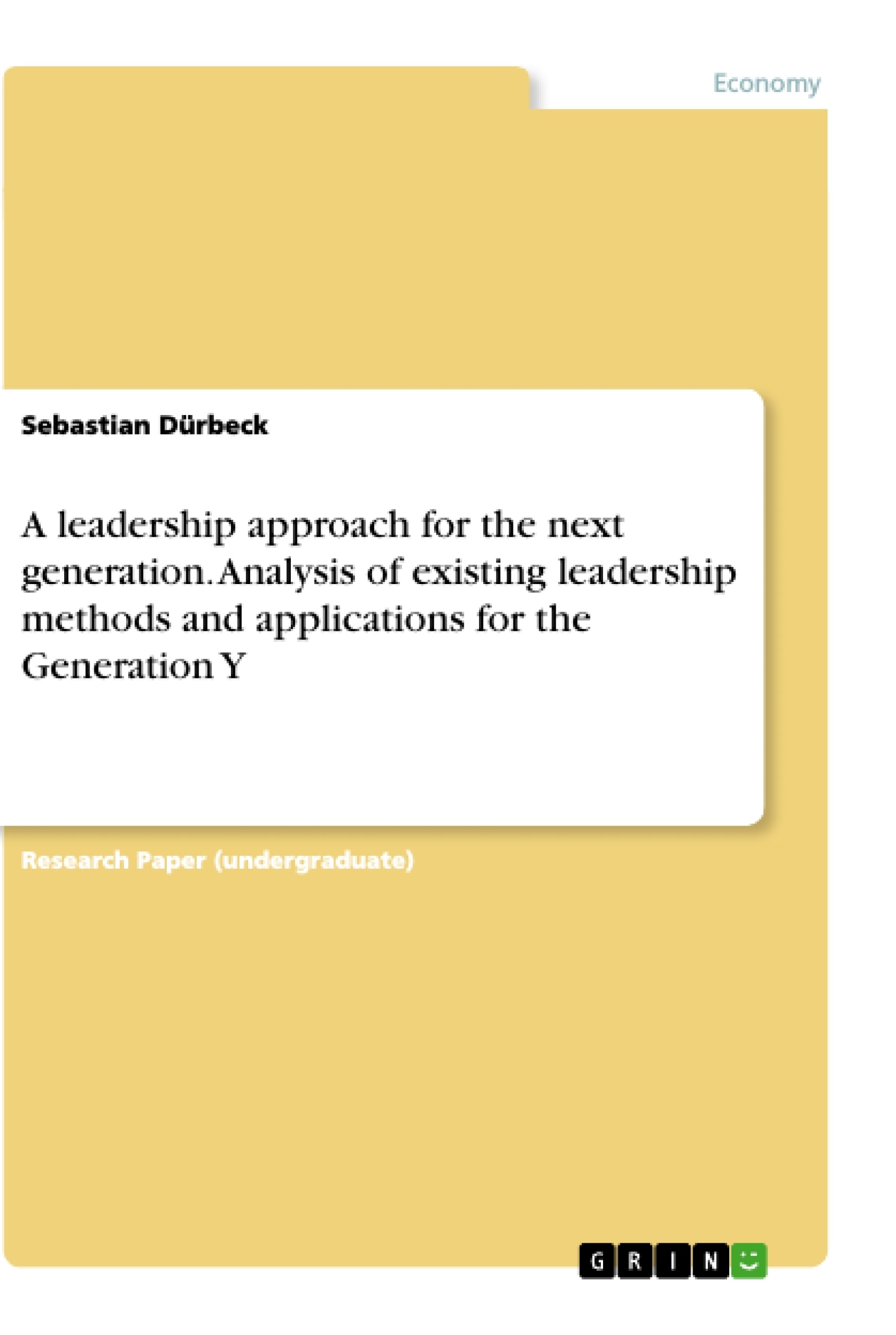This study aims to answer how the Generation Y has brought and will bring a new way of working to the companies and how the leadership methods and management organization in companies are influenced. The analysis is based on both scientific researches as well as on experiences of representatives of the Generation Y.
In chapter two the Generation Y is defined and analyzed in general, concerning characteristics and social behavior. The study is limited to the relevant factors and reasons why Millennials act like they do. The third chapter cares about the working and leadership environment of the representatives of the Generation Y and focusses on their attitude towards work and internal organizational structures. One key aspect will be their expectations for leadership, the other core area will be some selected superordinate strategies that match to their attitudes and that can be implemented in organizational structures. Chapter four discusses and evaluates a selection of existing leadership models and some new or modified approaches in matters of the demands of the Generation Y. After a short summary of the whole study in chapter five, some unconsidered topics are mentioned in the last chapter and an outlook is given.
Table of Contents
1. Introduction
1.1. Problem Statement
1.2. Structure and Objectives
2. Generation Y
2.1. Disambiguation and Demarcation
2.2. Characteristics
2.2.1. Basic Impulse
2.2.2. Motives
2.3. Social Behavior
2.3.1. Media
2.3.2. Communication
3. Working and Leadership Environment
3.1. Attitude to Work
3.2. Organization and Hierarchy
3.3. Leadership Requirements
3.4. Superordinate Strategic Tools
3.4.1. Motivation 3.0
3.4.2. SCARF-Model
3.4.3. VIE-Model
3.4.4. Tit-for-Tat Strategy
4. Leadership Methods
4.1. Behavioral Approaches
4.1.1. Bottom-up Approach
4.1.2. Transformational Leadership
4.1.3. Dialogical Leadership
4.1.4. Behavioral-Situational Leadership
4.2. Value-based Leadership
4.3. Meaning-oriented Leadership
4.3.1. Resonant Leadership
4.3.2. Servant Leadership
4.3.3. Leading by Meaning
4.4. Shared Leadership
4.5. Further Approaches
4.5.1. Magnet-for-free-Radicals Approach
4.5.2. Structural-Holes Approach
5. Conclusion
6. Outlook
References
- Citation du texte
- Sebastian Dürbeck (Auteur), 2016, A leadership approach for the next generation. Analysis of existing leadership methods and applications for the Generation Y, Munich, GRIN Verlag, https://www.grin.com/document/337823
-

-

-

-
Téléchargez vos propres textes! Gagnez de l'argent et un iPhone X. -

-
Téléchargez vos propres textes! Gagnez de l'argent et un iPhone X. -

-
Téléchargez vos propres textes! Gagnez de l'argent et un iPhone X. -

-
Téléchargez vos propres textes! Gagnez de l'argent et un iPhone X. -

-
Téléchargez vos propres textes! Gagnez de l'argent et un iPhone X. -

-
Téléchargez vos propres textes! Gagnez de l'argent et un iPhone X. -

-
Téléchargez vos propres textes! Gagnez de l'argent et un iPhone X. -

-
Téléchargez vos propres textes! Gagnez de l'argent et un iPhone X. -

-
Téléchargez vos propres textes! Gagnez de l'argent et un iPhone X.

